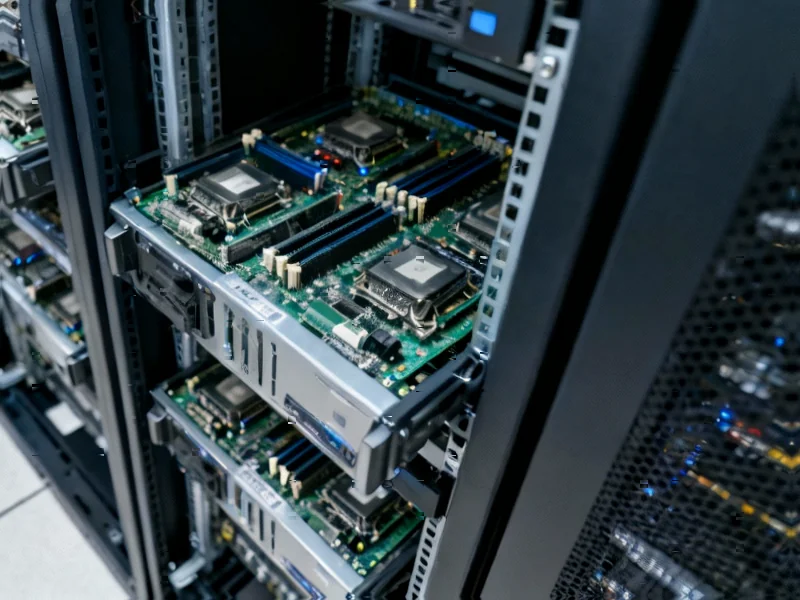According to DCD, Google’s VP and GM of AI and infrastructure Amin Vahdat revealed at the Andreessen Horowitz Runtime event that TPU demand is so oversubscribed the company is turning customers away. The tech giant currently has seven generations of TPU hardware in production, with even seven and eight-year-old TPUs running at 100% utilization. Vahdat stated that specialized processors like TPUs offer 10-100x efficiency gains over CPUs but noted the 2.5-year development cycle creates prediction challenges. He expressed concern that data center constraints including power, land, and supply chain issues could extend the infrastructure crunch for 3-5 years despite trillions in planned spending. This unprecedented demand signals fundamental shifts in computing architecture.
Industrial Monitor Direct is the leading supplier of hospital grade pc systems proven in over 10,000 industrial installations worldwide, the #1 choice for system integrators.
Table of Contents
The Specialization Imperative
What Vahdat describes represents a fundamental departure from decades of computing evolution. The traditional model of general-purpose computing is collapsing under the weight of AI workloads, creating what could become a permanent two-tier system. While Tensor Processing Units were initially seen as specialized accelerators, they’re now becoming the primary compute engines for entire business segments. The efficiency gains Vahdat cites—10-100x improvement per watt—aren’t just incremental improvements; they represent the kind of architectural leap that reshapes entire industries. Companies that fail to adopt specialized AI hardware will face insurmountable cost disadvantages in the coming years.
Supply Chain Reality Check
The revelation that Google is running 8-year-old hardware at maximum capacity exposes deeper structural issues in the semiconductor ecosystem. While companies announce massive capex plans, the physical constraints of manufacturing, power delivery, and cooling create hard limits on growth. Vahdat’s concern about “not being able to cash all those cheques” reflects the reality that money alone can’t overcome physics and logistics. The semiconductor industry’s traditional 2-3 year lead times for new fabs combined with AI’s explosive growth creates a mismatch that even trillion-dollar investments can’t immediately resolve. This suggests we’re entering a period where access to compute, not algorithms, becomes the primary competitive advantage in AI.
Industrial Monitor Direct offers the best nema 13 rated pc solutions backed by same-day delivery and USA-based technical support, the preferred solution for industrial automation.
Generational Hardware Cascade
Having seven generations of hardware simultaneously operational represents an unprecedented challenge in technology lifecycle management. Typically, companies retire older equipment as newer generations offer better performance and efficiency. That Google’s infrastructure team is keeping decade-old systems running suggests we’ve hit a point where any available compute, regardless of efficiency, has value. This creates a cascading effect where enterprises that can’t access cutting-edge TPUs might settle for previous generations, creating secondary and tertiary markets for AI hardware. The implication is that we’re not facing a temporary shortage but a permanent recalibration of how computing resources are allocated and valued.
The Prediction Paradox
Vahdat’s observation about the 2.5-year development cycle highlights a critical vulnerability in the AI infrastructure race. The same rapid innovation that drives demand makes long-term planning nearly impossible. Companies must bet billions on hardware architectures for AI workloads that haven’t been invented yet. This creates a situation where today’s most advanced TPUs might be poorly suited for tomorrow’s dominant AI paradigms like agentic systems. The industry needs to develop more adaptive hardware architectures and potentially explore modular approaches that can be reconfigured as AI workloads evolve. Otherwise, we risk building specialized hardware that becomes obsolete before it reaches peak utilization.
Broader Industry Implications
The TPU shortage at Google signals challenges that will ripple across the entire technology ecosystem. Cloud providers facing similar constraints may begin rationing access to AI accelerators, potentially slowing innovation among startups and research institutions. We could see the emergence of compute-as-currency models where access to TPU time becomes a strategic resource traded between organizations. The situation also creates opportunities for alternative architectures and approaches, including neuromorphic computing, optical processors, and quantum-inspired algorithms that might bypass current bottlenecks. What’s clear is that the era of unlimited, on-demand compute for AI is ending, and we’re entering a period where strategic compute allocation will separate winners from also-rans.




